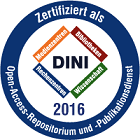Du, Shenxiu: Functional Characterizations of the Reciprocal Interaction of the Circadian Clock gene Time for coffee (TIC) with Stress and Energy in Arabidopsis. - Bonn, 2017. - Dissertation, Rheinische Friedrich-Wilhelms-Universität Bonn.
Online-Ausgabe in bonndoc: https://nbn-resolving.org/urn:nbn:de:hbz:5n-46600
Online-Ausgabe in bonndoc: https://nbn-resolving.org/urn:nbn:de:hbz:5n-46600
@phdthesis{handle:20.500.11811/7143,
urn: https://nbn-resolving.org/urn:nbn:de:hbz:5n-46600,
author = {{Shenxiu Du}},
title = {Functional Characterizations of the Reciprocal Interaction of the Circadian Clock gene Time for coffee (TIC) with Stress and Energy in Arabidopsis},
school = {Rheinische Friedrich-Wilhelms-Universität Bonn},
year = 2017,
month = mar,
note = {Circadian clocks are important time-environment response mechanism that provide adjustment and adaptation for light, dark, warm, cold or wet, dry altering; some of the altering even caused stresses in plants. The Arabidopsis thaliana circadian clock is usually composed of input pathway, output pathway and core oscillator. In current knowledge, the core oscillator includes three negative regulation feedback loops, the loop which on the center position was composed of TOC1, CCA1 and LHY. Thus, the morning expressed genes CCA1 and LHY inhibits the transcription of the evening gene TOC1. At dusk, TOC1 expression is also promoted the degradation of the protein CCA1 and LHY; therefore, TOC1 activated the transcriptional level of morning genes. Until now, how other signals regulate this clock in the input pathway is still not clear. As previously reported, Time for coffee (TIC) knock out mutant tic was originally found as a significant short circadian period phenotype clock mutant. Therefore, TIC could impact time-specific activity event with the core oscillator in circadian clock. Thus, TIC and kinase AKIN10 (SNF1-related protein kinase) toward the circadian clock was genetically tested, the affection of AKIN10 to circadian clock which was TIC dependent was found. Additionally, tic also causes numerous developmental, metabolic, and stress-related phenotypes.
To investigate further functions of TIC in the regulation of the circadian clock, I investigated the circadian period of TIC overexpression line (TICox); the analysis of circadian period result for TICox showed that TICox lines displayed similar short period phenotype as tic, and the similar phenotypes of leaf morphology were also observed. As tic mutants displayed drought tolerance, thus, to learn more about TIC in diverse physiological processes on drought stress response pathway, I investigated the phenotype of drought tolerance of tic mutant in Ws (Wassileskija) background and analysis the expression of key circadian gene TOC1 which also involved drought response in ABA depended pathway and downstream genes in tic mutants. , tic mutants in Ws background displayed similar drought tolerance phenotype and the expression condition of ABA-related gene (ABAR) compared with tic. Next, the tic retro-complementation line of TIC with mutagenesis of No.351 serine to alanine displayed higher drought tolerance compared to tic retro-complementation line of TIC and wild type.
Next, to investigate the TIC biochemical function and whether TIC can serve as substrates for AKIN10 which could impact energy metabolism for clock-oscillator function of AKIN10, the TIC fragment 427 to 578 was germinated and the phosphorylation which was activated by AKIN10 was observed in kinase assay in vitro. Thus, I use the MS analysis to test the phosphorylation on TIC for AKIN10, the result showed that No.466 serine is the phosphorylation set in vitro. Furthermore, the phosphorylated No.466 serine on TIC was also detected in MS analysis of nucleoprotein in vivo.
In summary, these observations of phenotype and the biochemical analysis result indicate that TIC is in a protein complex, which in the regulation process could inhibit TIC overexpression. Furthermore, the phosphorylation-dephosphorylation modification could be a main regulation method of TIC. Therefore, TIC is a connector between drought stress response and the circadian clock, and also strongly supports that TIC plays a role in the input pathway of circadian clock caused by phosphorylation with AKIN10.},
url = {https://hdl.handle.net/20.500.11811/7143}
}
urn: https://nbn-resolving.org/urn:nbn:de:hbz:5n-46600,
author = {{Shenxiu Du}},
title = {Functional Characterizations of the Reciprocal Interaction of the Circadian Clock gene Time for coffee (TIC) with Stress and Energy in Arabidopsis},
school = {Rheinische Friedrich-Wilhelms-Universität Bonn},
year = 2017,
month = mar,
note = {Circadian clocks are important time-environment response mechanism that provide adjustment and adaptation for light, dark, warm, cold or wet, dry altering; some of the altering even caused stresses in plants. The Arabidopsis thaliana circadian clock is usually composed of input pathway, output pathway and core oscillator. In current knowledge, the core oscillator includes three negative regulation feedback loops, the loop which on the center position was composed of TOC1, CCA1 and LHY. Thus, the morning expressed genes CCA1 and LHY inhibits the transcription of the evening gene TOC1. At dusk, TOC1 expression is also promoted the degradation of the protein CCA1 and LHY; therefore, TOC1 activated the transcriptional level of morning genes. Until now, how other signals regulate this clock in the input pathway is still not clear. As previously reported, Time for coffee (TIC) knock out mutant tic was originally found as a significant short circadian period phenotype clock mutant. Therefore, TIC could impact time-specific activity event with the core oscillator in circadian clock. Thus, TIC and kinase AKIN10 (SNF1-related protein kinase) toward the circadian clock was genetically tested, the affection of AKIN10 to circadian clock which was TIC dependent was found. Additionally, tic also causes numerous developmental, metabolic, and stress-related phenotypes.
To investigate further functions of TIC in the regulation of the circadian clock, I investigated the circadian period of TIC overexpression line (TICox); the analysis of circadian period result for TICox showed that TICox lines displayed similar short period phenotype as tic, and the similar phenotypes of leaf morphology were also observed. As tic mutants displayed drought tolerance, thus, to learn more about TIC in diverse physiological processes on drought stress response pathway, I investigated the phenotype of drought tolerance of tic mutant in Ws (Wassileskija) background and analysis the expression of key circadian gene TOC1 which also involved drought response in ABA depended pathway and downstream genes in tic mutants. , tic mutants in Ws background displayed similar drought tolerance phenotype and the expression condition of ABA-related gene (ABAR) compared with tic. Next, the tic retro-complementation line of TIC with mutagenesis of No.351 serine to alanine displayed higher drought tolerance compared to tic retro-complementation line of TIC and wild type.
Next, to investigate the TIC biochemical function and whether TIC can serve as substrates for AKIN10 which could impact energy metabolism for clock-oscillator function of AKIN10, the TIC fragment 427 to 578 was germinated and the phosphorylation which was activated by AKIN10 was observed in kinase assay in vitro. Thus, I use the MS analysis to test the phosphorylation on TIC for AKIN10, the result showed that No.466 serine is the phosphorylation set in vitro. Furthermore, the phosphorylated No.466 serine on TIC was also detected in MS analysis of nucleoprotein in vivo.
In summary, these observations of phenotype and the biochemical analysis result indicate that TIC is in a protein complex, which in the regulation process could inhibit TIC overexpression. Furthermore, the phosphorylation-dephosphorylation modification could be a main regulation method of TIC. Therefore, TIC is a connector between drought stress response and the circadian clock, and also strongly supports that TIC plays a role in the input pathway of circadian clock caused by phosphorylation with AKIN10.},
url = {https://hdl.handle.net/20.500.11811/7143}
}






